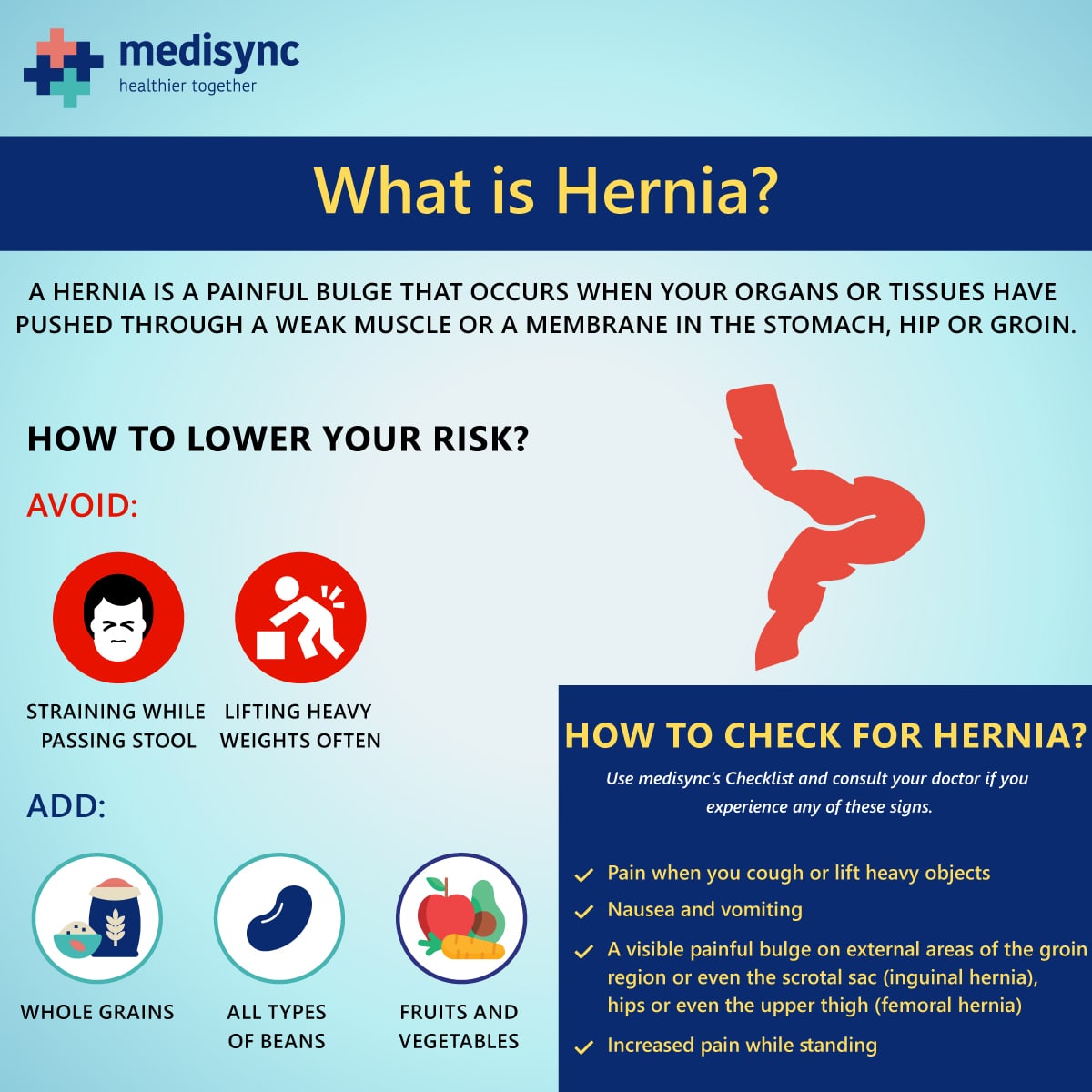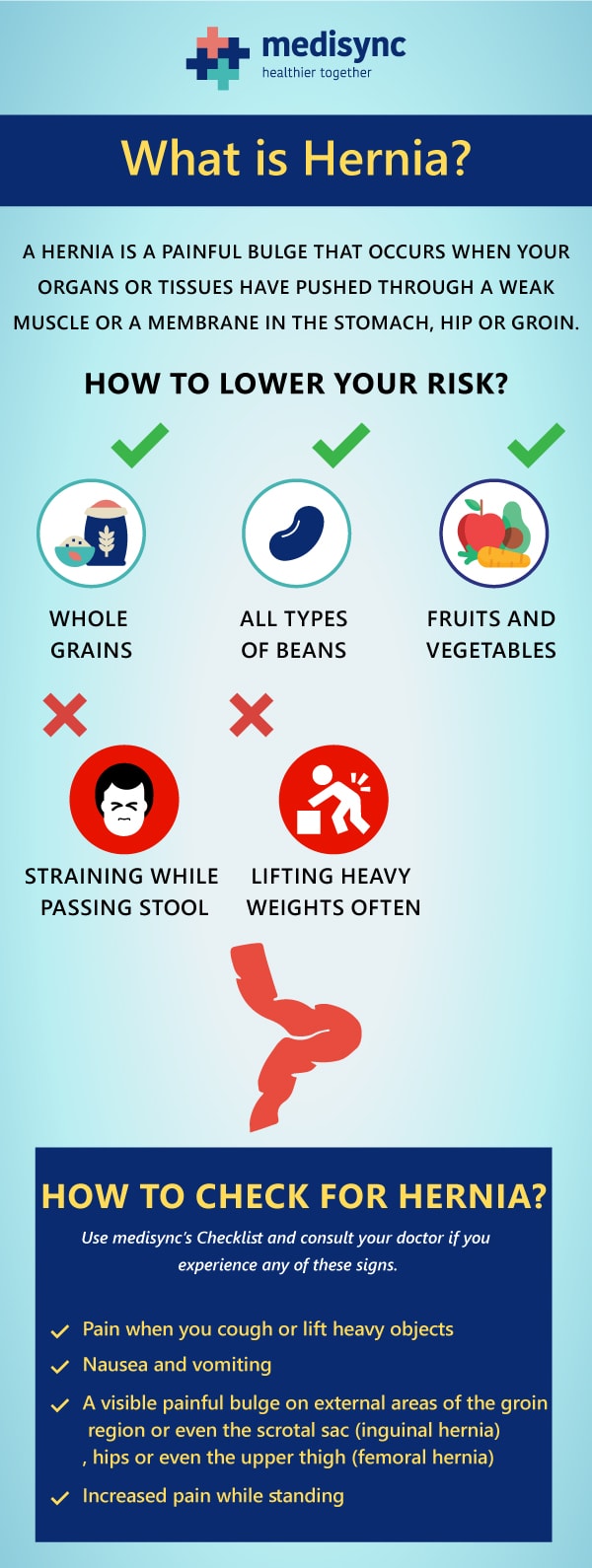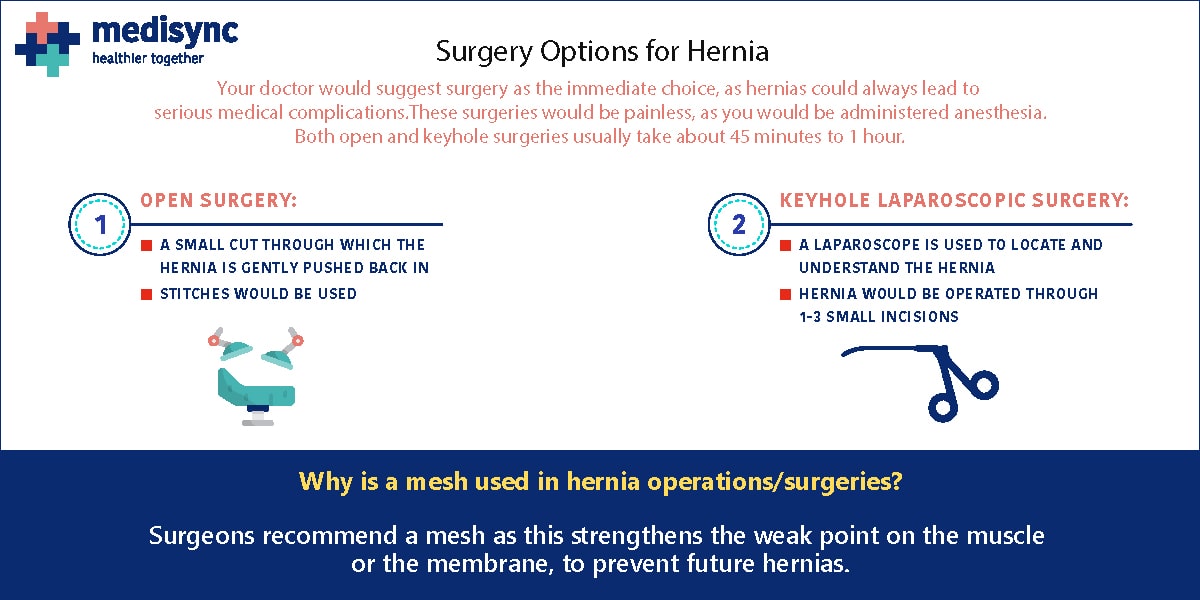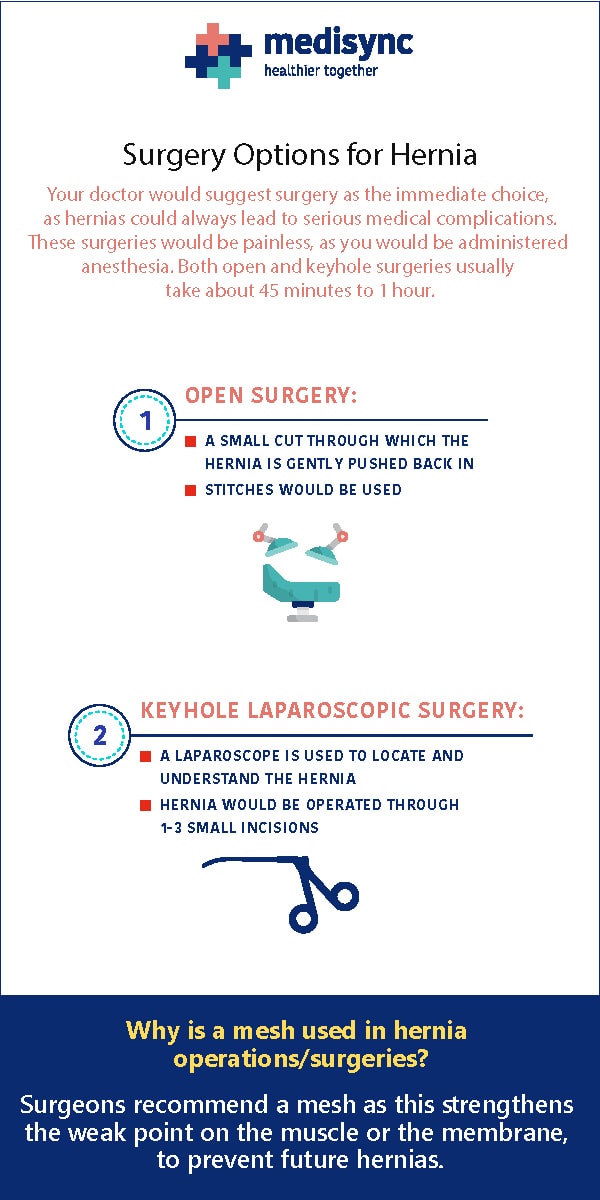30,000+ Happy Patients. 100+ Experienced Doctors. Trusted Hospitals. One Network.
Consult with experienced doctors for Hernioplasty surgery in Chennai
Suffering from hernia? Book a consultation with leading doctor for Hernioplasty near you.
Get a call back
Consult with experienced doctors for Hernioplasty surgery

இனி நாங்கள் உங்கள் மொழியில் பேசுகிறோம்!
Call 04461713251 for free consultationPatient testimonials
Get the right treatment for Hernia


What is a Hernia?
A hernia occurs when your organs or tissues have pushed through a weak muscle or a delicate membrane. It is a painful bulge accompanied by a sharp, shooting pain, usually in the lower abdominal region, between the stomach, hip and the groin.
Inguinal hernias in men are the most common hernias reported in India.
How to check for hernias?
If you notice these signs and symptoms of hernia, consult a doctor:
- A visible painful bulge on external areas of the groin region or even the scrotal sac (inguinal hernia), hips or even the upper thigh (femoral hernia)
- Pain when you cough or lift heavy objects
- Nausea and vomiting
- Increased pain while standing


Where can you find hospitals and clinics for hernia?
If you experience any of these symptoms, medisync connects you, instantly, with the best doctors for hernia. Choose medisync and find the best hernia hospitals and clinics near you.
Do I need a hernia operation?
Hernias do not go away on their own and require medical attention. Your doctor may recommend a simple surgery called hernioplasty. Surgeries are the most effective way to prevent hernia complications such as strangulated hernias, and recurrence.
If your doctor confirms that you have a hernia, your doctor may recommend any one of these surgeries.
Surgery Options for Inguinal Hernia & other hernias
While both these surgical options can be used for inguinal hernias, they may also be used for hernias of the belly button (called umbilical hernias) and upper thigh (femoral). Hernia operations are generally cost-effective and completely safe.
Open surgery:
- A small cut through which the hernia is gently pushed back in
- Stitches would be used
Keyhole Laparoscopic surgery:
- A laparoscope is used to locate and understand the hernia
- Hernia would be operated through 1-3 small incisions
You will feel much better by the first week from your date of surgery. Recovery time for hernia surgeries are usually 1-2 weeks, after which you can resume your normal routine.
Why is a mesh used in hernia operations/surgeries?
After hernia surgery, a mesh seals the opening to allow body tissues to grow through and around it. Surgeons perform hernia repairs with mesh also to strengthen the weak point on the muscle or the membrane, to prevent future hernias.
How to take care of hernia at home?
Use these home remedies only to lower the symptoms of hernia, and see a doctor at the earliest.
This is not to be treated as a substitute for medical advice or suggestions. Any of the signs of hernia must be looked at by a doctor.
- Drink 1 Glass of Aloe Vera: Known for its anti-inflammatory and pain-relieving properties, aloe vera juice can greatly reduce the pain associated with hernia.
- Use an Ice Pack: Apply an ice pack gently on the bulge to reduce pain and swelling temporarily.
What causes hernia?
Lifting heavy objects and straining while passing stool may cause hernias, especially in those who are at risk such as the elderly and those who have a family history of hernia.
How much does hernia treatment cost?
Hernia treatment cost varies on the type of mesh selected and the surgery selected.
If you choose a medisync hospital, you can pay easily with flexible EMI options (3, 6, 9, 12 or 18 months).
If you have health insurance, you can claim insurance for hernia treatment conveniently with our hassle-free insurance procedures.
FAQs
Hernia surgeries are among the most common surgeries performed. Hernia repair surgery is quite effective and considered to be safe.
In some cases, there aren’t enough symptoms displayed by hernia requiring medical intervention. However, it is not possible for hernias to heal or resolve on its own without surgical intervention. So, when adverse symptoms do occur, surgery becomes necessary.
A hernioplasty may be performed either using a laparoscopic technique or a traditional open method. The open surgery involves making a large incision in the groin for accessing the hernia sac while the laparoscopic hernia surgery involves 3-4 incisions being made in the affected area and surgical instruments and a laparoscope is inserted through those incisions. The abdominal wall is analyzed to check if hernioplasty is necessary with the hernia repair surgery. If the wall is strong enough for withstanding additional stress, herniorrhaphy suffices. If it is weak, hernioplasty is performed, with the surgeon attaching a patch or mesh for support. The whole procedure lasts around 45 minutes to one hour.
Before you are discharged from the hospital, the doctor will explain to you the activities that you need to avoid. Generally, a complete recovery from hernia surgery takes 3-6 weeks. You will need around 1-2 weeks before you can go back to everyday work and activities.
Just as you would expect from any surgery, there are certain side effects associated with hernioplasty. The wound or site of incision is likely to be noticeably red and swollen. It is likely to be painful as well, particularly to the touch. Over-the-counter anti-inflammatory or pain medication may be helpful with the symptoms of inflammation. It is also possible to immediately reduce inflammation by applying ice to the affected area every hour for ten minutes.
A Hiatal Hernia occurs when the upper part of the stomach pushes upward through the diaphragm. The diaphragm usually has a small opening called hiatus through which the food tube called esophagus passes on its way to connect to your stomach. The stomach can push up through this hiatal opening and cause a Hiatal Hernia.
An Inguinal Hernia is a protrusion of soft tissue – usually part of the membrane lining the abdominal cavity (omentum) or part of the Intestine or protrusion of intra-abdominal contents– through a weak point in the abdominal muscles. It could be fat or bowel and in some cases, the genitourinary tract. The protrusion can be painful, especially when you put pressure on your abdomen by lifting heavy objects or bending over or when you cough.
An Umbilical Hernia results in a soft swelling or bulge near the navel. An umbilical hernia occurs when part of the intestine protrudes through the umbilical opening in the abdominal muscles and usually looks like a belly button . Umbilical hernias are most commonly seen in infants but they can affect adults as well. They are typically painless.
medisync hospitals offer treatment for hernia across 8 hospitals in Bangalore, Chennai, Hyderabad and Mysore. Hernia can be treated by either open or laparoscopic method. It is advised to visit a doctor to understand which type of surgery is best suited for the patient.
Connect with us
www.medisync.org© Copyright medisync
All Rights Reserved. Terms and Conditions




